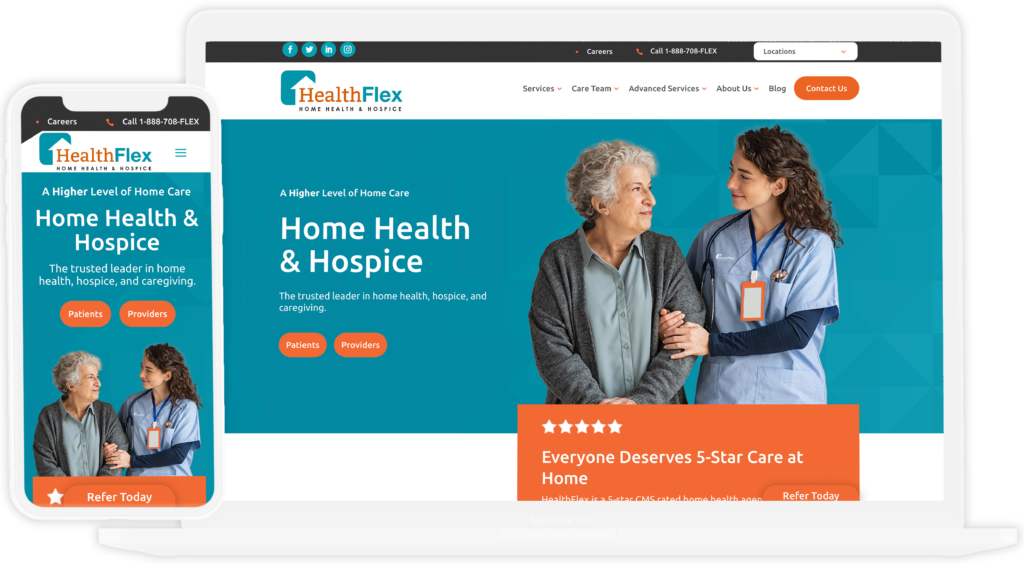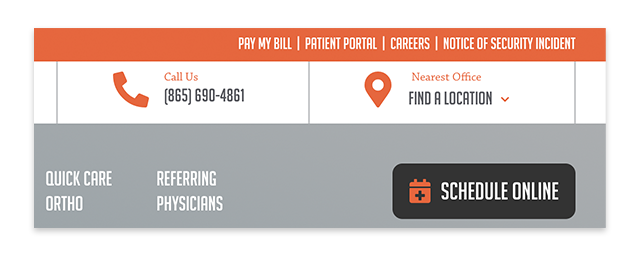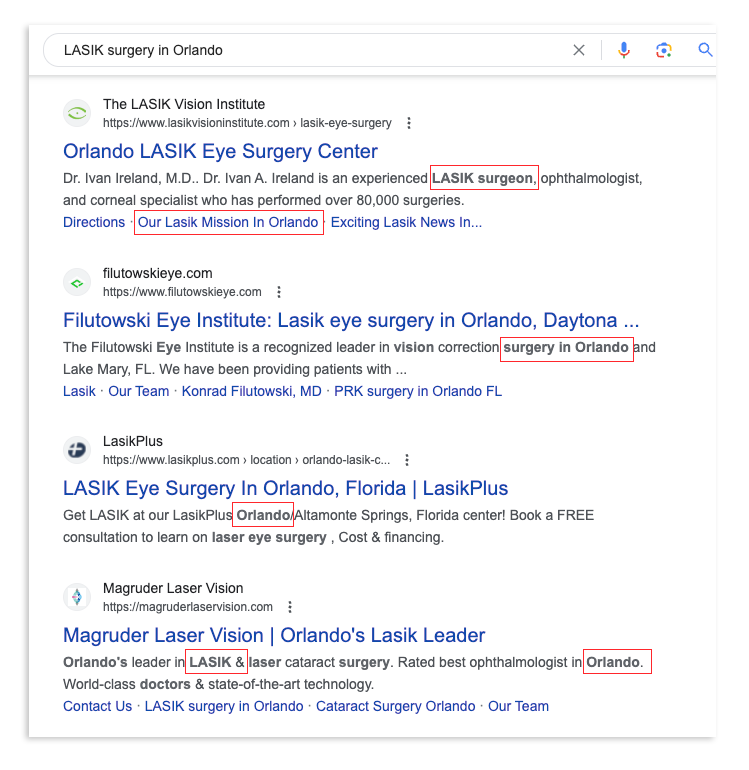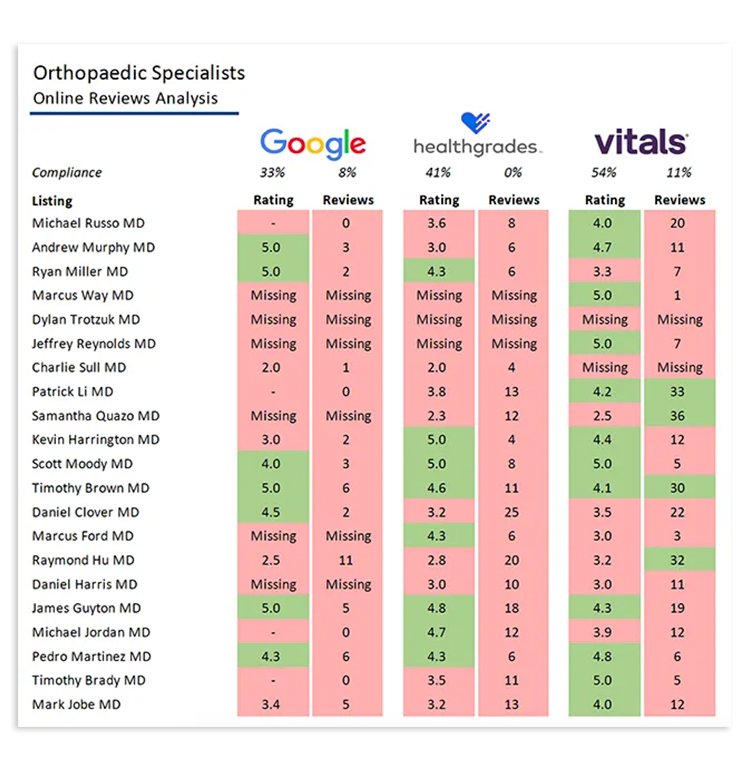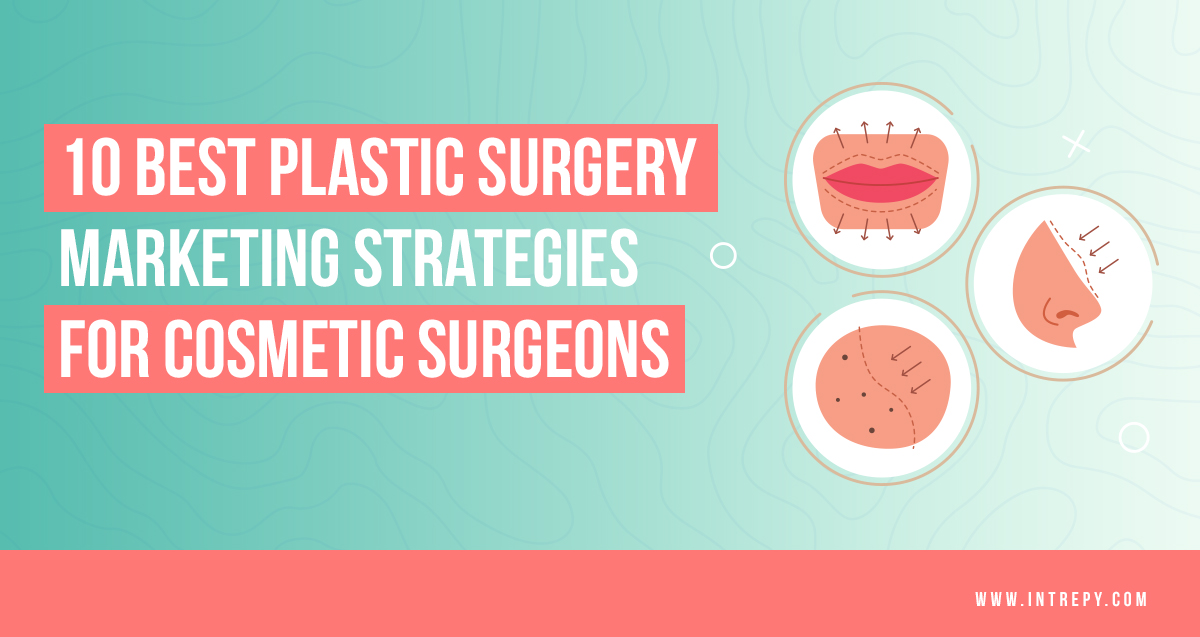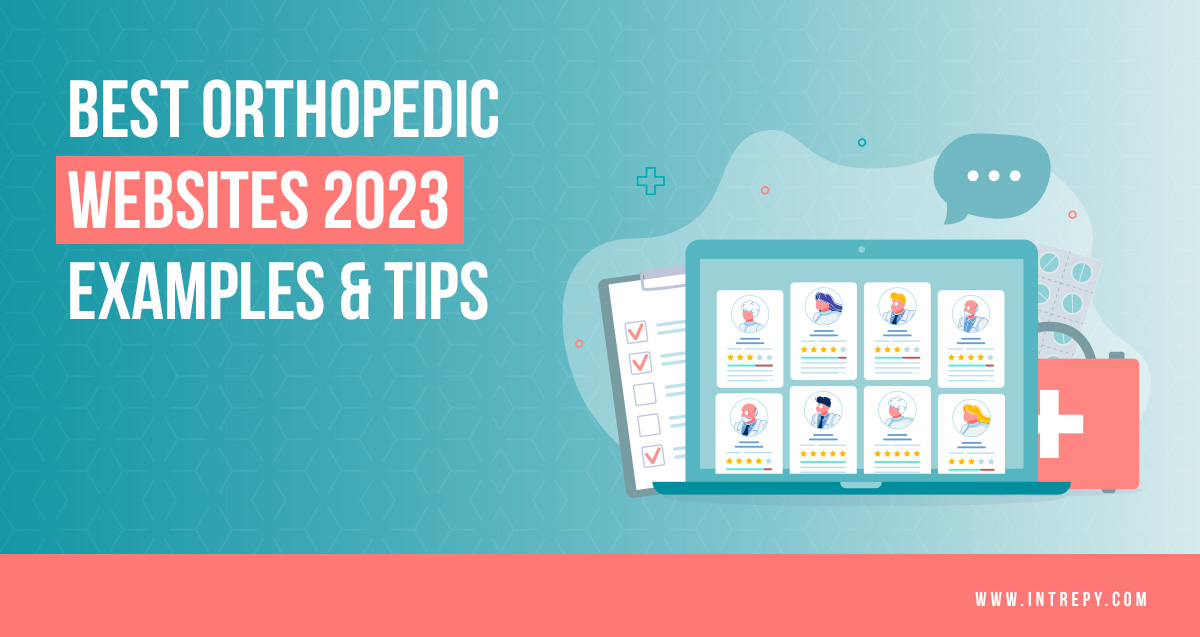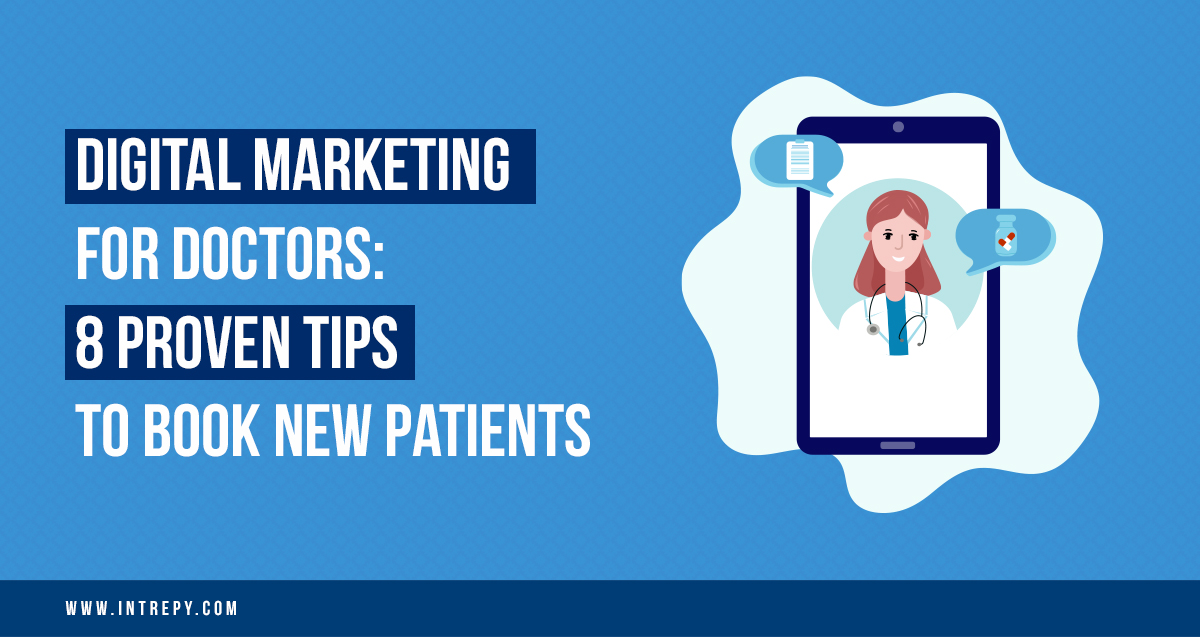In today’s rapidly evolving digital landscape, the medical field is no exception when it comes to the necessity for robust and targeted marketing strategies. Ophthalmologists, particularly those specializing in LASIK procedures, face an ever-growing competition.
Patients today are more informed, more selective, and they rely heavily on online resources when choosing a healthcare provider.
As we tread through 2024, the LASIK surgery market is bustling with potential, but to tap into it, ophthalmologists need to be equipped with the most effective marketing tools and strategies. This guide delves deep into the top 10 LASIK marketing strategies tailored for this year, ensuring that ophthalmologists not only attract but also retain and satisfy their patients.
Whether you’re a seasoned ophthalmologist looking to revamp your marketing approach or a newcomer aiming to make a mark, these strategies are geared to propel you to the forefront of the industry.
LASIK Marketing Strategies for Ophthalmologists
Navigating the world of medical marketing can be intricate, especially in a specialized field like ophthalmology. As LASIK procedures gain popularity and the competition intensifies, having a refined marketing strategy becomes more than just a benefit—it’s a necessity.
Before we delve into the detailed strategies that can elevate your practice and set you apart in 2024, it’s imperative to understand the overarching theme: it’s all about connecting, educating, and building trust with potential patients.
From understanding your target audience to leveraging the power of digital media, let’s explore the top marketing strategies tailored specifically for ophthalmologists specializing in LASIK.
Understanding Your Target Audience
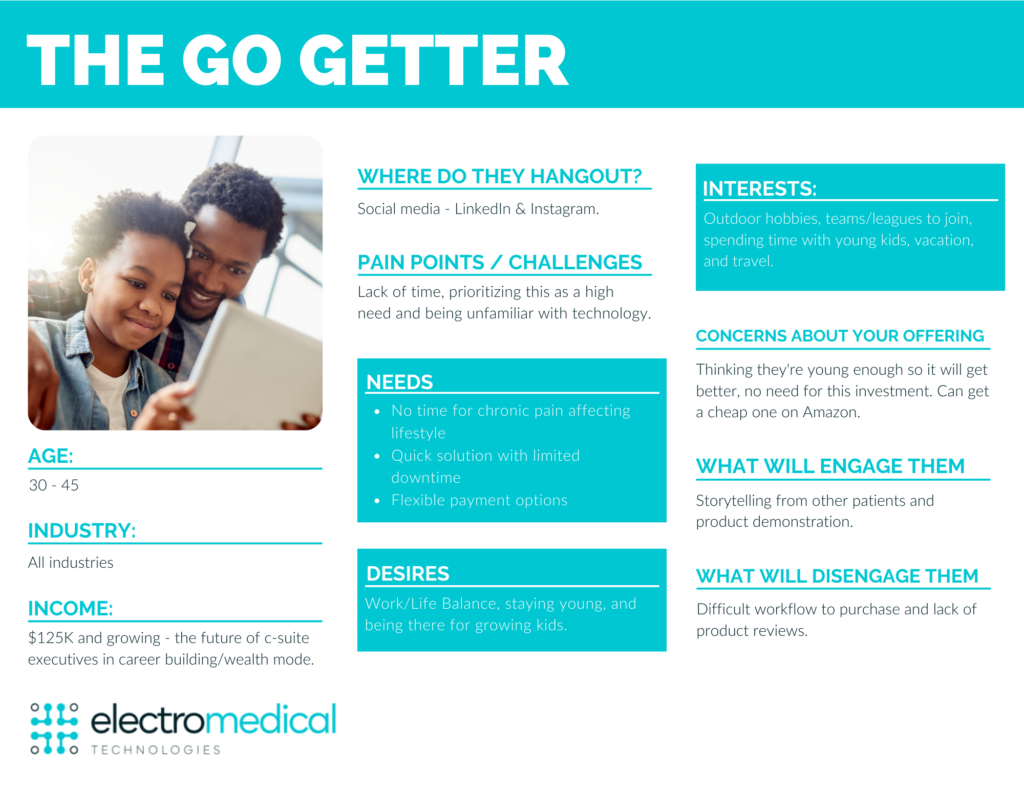
Every successful marketing strategy begins with a profound understanding of its audience. For LASIK surgeons, understanding the unique demographics, motivations, and concerns of potential LASIK patients is paramount.
The typical age group for LASIK patients usually ranges between 20 and 40, a cohort that is not only tech-savvy but also active on social media and other digital platforms.
Acknowledging this allows for tailored marketing efforts that appeal directly to their online habits and preferences.
Understanding why someone seeks LASIK surgery is crucial. Are they looking for convenience in daily life without glasses? Aesthetics? Better performance in professional or athletic endeavors?
By recognizing these motivations, you can craft messages that resonate deeply with potential patients.
Honing in on these aspects of your target audience can help you design marketing strategies that are both empathetic and effective.
Tailored content, patient testimonials addressing specific fears, and interactive platforms where potential patients can have their questions addressed are just some of the ways to appeal to this discerning group.
In the world of LASIK surgery, understanding your audience is the first step to ensuring your practice thrives and stands out in a sea of competitors.
Developing a Comprehensive Medical Website
In our digital age, a website acts as the virtual front door to any medical practice. For ophthalmologists specializing in LASIK, it’s the first impression, the primary source of information, and often the initial point of contact for potential patients.
A well-designed and informative website can set the tone for patient trust, understanding, and engagement.
User-Friendly Design:
The website should be easy to navigate, with a clean design that is both desktop and mobile-friendly.
Intuitive navigation ensures that patients can effortlessly find the information they’re seeking, be it about the procedure, costs, recovery, or testimonials.
Informative Content:
Patients considering LASIK will have numerous questions. Dedicate sections of the website to detailed explanations of the LASIK procedure, benefits, potential risks, and aftercare.
The use of diagrams, infographics, and even videos can help break down complex information into digestible formats.
Testimonials and Success Stories:
Nothing builds trust quite like hearing from those who’ve undergone the procedure. Incorporate a section for patient testimonials, before-and-after photos, and even short video snippets.
These personal accounts can alleviate concerns and demonstrate the tangible benefits of the surgery.
FAQs:
Address common questions and concerns in a dedicated FAQ section. This not only provides valuable information but can also improve website SEO, making it easier for potential patients to find your practice through online searches.
Clear Call-to-Actions (CTAs):
Encourage visitors to take the next step, whether it’s booking a consultation, signing up for a webinar, or downloading an informational guide.
Visible CTAs can guide potential patients through their decision-making journey.
Clear Call-to-Actions (CTAs):
Encourage visitors to take the next step, whether it’s booking a consultation, signing up for a webinar, or downloading an informational guide.
Visible CTAs can guide potential patients through their decision-making journey.
Interactive Features:
Consider integrating features like chatbots or live chat options. These tools can provide instant answers to patient queries, making the website experience more interactive and responsive.
In essence, a comprehensive website is more than just a digital brochure—it’s an educational tool, a platform for engagement, and a testament to your practice’s commitment to patient care and transparency.
Investing time and resources into building a stellar website can significantly boost your LASIK practice’s visibility and credibility.
Optimizing for Local Search Engine Optimization (SEO)
When potential LASIK patients begin their search for a reputable ophthalmologist, they often turn to search engines. Local medical Search Engine Optimization (SEO) ensures that your practice appears prominently in search results when individuals in your area look for LASIK-related services.
By focusing on local SEO, you not only increase your visibility but also attract patients who are actively seeking the services you offer.
Claim and Optimize Google My Business:
This free tool by Google lets you list your practice on Google Maps and local search results.
Ensure all details are accurate, from your address and phone number to operating hours.
Regularly update it with fresh content and photos, and respond to reviews to increase engagement.
Location-Specific Keywords:
Incorporate keywords specific to your city or locality within your website content. For instance, “LASIK surgery in Orlando” or “Atlanta ophthalmologist” can help you rank higher in local searches.
Encourage Reviews:
Online reviews can significantly influence a potential patient’s decision. Encourage satisfied patients to leave positive reviews on platforms like Google and even your website.
Address both positive and negative reviews promptly and professionally, showcasing your commitment to patient satisfaction.
Local Backlinks:
Collaborate with local businesses, bloggers, or news sites to gain backlinks. Guest posting on a local health blog or sponsoring a local event can get you valuable backlinks and further establish your presence within the community.
Mobile Optimization:
Given that many users will be accessing your site from mobile devices, ensure your website is mobile-friendly. This not only improves user experience but is also a ranking factor for Google.
Localized Content:
Regularly update your blog or content section with articles pertinent to your local audience.
Discuss LASIK in the context of local events, weather conditions, or even local celebrities who’ve opted for the procedure.
In a nutshell, local SEO is all about ensuring that when someone in your vicinity is contemplating LASIK surgery, your practice is at the forefront of their search results.
By cultivating a strong local online presence, you’re positioning your practice as the go-to destination for LASIK procedures in your community.
Engaging LASIK Content Marketing
Content marketing isn’t just about creating informative text for your website; it’s a powerful tool to position your LASIK practice as a leading authority, offer educational insights, and foster trust among your audience.
Combined with an effective social media strategy, content marketing can amplify your reach, driving both engagement and conversions.
Educational Blog Posts:
Regularly populate your blog with articles addressing diverse LASIK topics—new technological advancements, debunking myths, post-surgery care, and more.
These articles not only serve as valuable SEO assets but also as content pieces to share across your social media platforms.
Interactive Infographics:
Embrace the power of visual content. Craft infographics that simplify complex LASIK topics, and share them on platforms like Pinterest and Instagram, where visual content thrives.
Patient Stories:
Delve into detailed patient experiences, presenting them in case-study formats or even as video testimonials. Sharing these stories on platforms like Facebook and Instagram can resonate emotionally with potential patients, driving trust and consideration.
Email Newsletters:
Foster consistent engagement by sending out newsletters. Highlight recent blog posts, share patient success stories, and promote any upcoming webinars. Post your newsletter content on social media to gain more subscribers.
Webinars and Live Q&A Sessions:
Use platforms like Facebook Live or Instagram Live to host sessions on LASIK topics.
Engaging directly with your audience in real-time not only positions you as an expert but also makes your practice more approachable.
Regular Social Media Posts:
Keep your audience informed and engaged with regular posts. Share behind-the-scenes glimpses of your practice, celebrate milestones, or even share snippets of positive feedback.
Platforms like Instagram and Facebook are ideal for these engagement-driven posts.
Marrying content marketing with a robust social media strategy ensures you’re reaching potential patients at multiple touchpoints. As they engage with your varied content, they’re not just getting acquainted with LASIK—they’re building a trusting relationship with your practice.
Leveraging Social Media for LASIK Practices
In today’s digital age, social media isn’t just about staying connected with friends and family; it’s a powerful marketing tool that can significantly boost the visibility and credibility of your LASIK practice.
For ophthalmologists, these platforms offer an opportunity to showcase expertise, patient success stories, and build a genuine rapport with both existing and potential patients. Let’s delve into how you can harness social media effectively.
Effective Social Media Platforms for Ophthalmologists:
- Instagram: A visually-driven platform, Instagram is ideal for showcasing before-and-after photos, video testimonials, and behind-the-scenes glimpses of your clinic. Its ‘Stories’ feature can be utilized for Q&A sessions, highlighting patient journeys, or even showcasing live LASIK procedures with prior consent
- Facebook: With its vast user base, Facebook offers a blend of visual and textual content opportunities. Host live sessions discussing LASIK, share blog posts from your website, and engage with user comments to create a sense of community
- LinkedIn: Targeted more towards professionals, LinkedIn is a great platform to share industry-related news, research findings, and collaborate with fellow ophthalmologists. It’s also effective for B2B outreach if your practice offers specialized services or training
- YouTube: Given the visual nature of LASIK, YouTube is ideal for patient testimonials, informational videos about the procedure, and even virtual tours of your facility
Tapping into the power of social media can set your LASIK practice apart. It’s not just about advertising but about building relationships, showcasing real results, and positioning your practice as a trusted, patient-centric institution in the realm of ophthalmology.
Video Marketing for LASIK for Patient Education
The adage “seeing is believing” holds particularly true in the realm of medical procedures. For a treatment like LASIK, where patients may have reservations or seek clarity, video marketing emerges as a powerful tool.
By demystifying the procedure and offering tangible insights through videos, ophthalmologists can educate, reassure, and engage potential patients more effectively.
Explaining LASIK Procedures Through Videos:
- Animated Explainers: Use animated videos to illustrate the LASIK procedure step-by-step. These can simplify complex medical jargon into easily digestible visuals, helping patients understand the intricacies of the surgery
- Doctor-led Demonstrations: Have ophthalmologists or medical professionals in your practice explain the procedure, discussing its benefits, safety measures, and post-surgery care. Their expertise and demeanor can foster trust
- Patient Journey Videos: Document the journey of a patient from their initial consultation to the post-operative phase. Such real-life insights can help potential patients visualize and relate to the entire process
- FAQ Sessions: Address common questions or concerns regarding LASIK in a video format. This can be done as a series, addressing different facets of the procedure in each video
- Virtual Tours: Showcase your facility, the equipment you use, and your team. Offering a glimpse into the environment can make potential patients more comfortable with the idea of choosing your practice
Video marketing not only educates but also humanizes your practice. It’s an opportunity to blend professional expertise with storytelling, creating content that informs, reassures, and engages.
In an era where patients actively seek information online before making health decisions, a well-crafted video can be the deciding factor in choosing your LASIK practice.
Online Reputation Management for LASIK Practices
In the digital age, a clinic’s online reputation can significantly influence a patient’s decision-making process.
Reviews, testimonials, and feedback, available at the click of a button, often serve as the first impression for many potential patients. Hence, actively managing and curating this online image isn’t just a recommendation—it’s a necessity.
Through online reputation management (ORM), ophthalmologists can foster trust, address concerns, and position their LASIK practice as a leading choice for prospective patients.
Importance of Managing Reviews and Feedback:
Before even setting foot in your clinic, many patients will research online reviews to gauge the quality of your services. A well-maintained online reputation can significantly impact their perception.
Positive reviews and constructive feedback can solidify your clinic’s status as a trusted, patient-centric institution. Reviews can also provide insights into areas of improvement, whether it’s patient care, facility amenities, or the LASIK procedure itself.
Studies suggest that a majority of patients consider online reviews as important as personal recommendations. A strong online reputation can tip the scales in your favor.
Positive reviews can improve local search rankings, making it easier for potential patients to discover your clinic online.
Responding to Both Positive and Negative Reviews to Build Trust:
- Acknowledge and Appreciate: For positive reviews, a simple acknowledgment can go a long way. Thank the patient for their feedback and express your commitment to continued excellence
- Prompt and Polite Responses: For negative feedback, it’s essential to respond promptly. Apologize for any inconvenience caused, and ensure your reply is respectful and understanding
- Solution-Oriented Approach: Instead of being defensive, focus on how the issue can be resolved. Offering solutions showcases your commitment to patient satisfaction
- Avoid Medical Details: Due to patient confidentiality, avoid discussing specific medical details or treatments in your responses. Instead, encourage the reviewer to contact your clinic directly to discuss their concerns
- Encourage Feedback: Post-treatment, motivate your patients to share their experiences online. You can do this through follow-up emails, SMS, or even in-person reminders
- Monitor Regularly: Use tools or ORM platforms to keep track of your online reviews across different platforms. Regular monitoring allows for timely interventions and responses
- Professionalism: Always maintain a professional tone in your responses. Avoid any confrontational language or attitudes, even if the review is unfounded or seems unfair
In a connected world, every review, comment, or star rating contributes to your clinic’s narrative.
Through diligent online reputation management, ophthalmologists can steer this narrative, fostering a transparent, trustworthy, and patient-centric image that resonates with both existing and potential LASIK patients.
Utilizing Paid Advertising for LASIK
In the competitive world of LASIK procedures, relying solely on organic reach might not be enough to capture the attention of potential patients. Paid advertising can propel your practice to the forefront, targeting specific audiences and amplifying your reach.
With precision targeting, appealing visuals, and compelling copy, platforms like Google Ads and Facebook Ads can be game-changers for ophthalmologists aiming to increase their patient base.
Paid Advertising Platforms Suitable for LASIK Marketing:
- Google Ads:
- Search Ads: These ads appear at the top of Google search results when potential patients search for LASIK-related queries. Use keyword research to target terms like “LASIK procedure near me” or “best LASIK surgeons”
- Display Ads: Visual banners that appear on various websites visited by your target audience. They’re especially effective for showcasing before-and-after LASIK images or promoting special offers
- Video Ads: Showcase patient testimonials or procedure explanations on platforms like YouTube, targeting viewers based on their search history related to vision correction
- Facebook Ads:
- Targeting Capabilities: Facebook’s detailed demographic and interest-based targeting allow you to reach specific age groups, locations, or even those who’ve shown interest in LASIK or related topics
- Visual Appeal: Use carousel ads, video testimonials, or engaging images to illustrate the benefits of LASIK
- Lead Generation Ads: These ads allow potential patients to show interest, share their contact information, or even book consultations without leaving the platform
- Instagram Ads: Given its visual nature, Instagram (owned by Facebook) is excellent for showcasing the transformative effects of LASIK. Use Stories ads, carousel posts, or even IGTV for longer video content
In conclusion, while organic growth and reputation are invaluable, the targeted nature of paid advertising can significantly enhance your LASIK practice’s visibility and patient engagement.
By effectively leveraging platforms like Google Ads and Facebook Ads, and employing strategic retargeting, ophthalmologists can navigate the digital landscape with precision, ensuring their services are showcased to the right audience at the right time.
Hosting Webinars and Q&A Sessions for Your LASIK Patients
In an age where information is king, healthcare providers are constantly seeking innovative ways to engage and educate their potential patients. For ophthalmologists specializing in LASIK, hosting webinars and Q&A sessions can be a transformative approach.
Not only do these platforms provide a real-time avenue for answering patient queries, but they also position the hosting clinic or practitioner as an industry thought leader, further cementing trust and rapport.
Engaging Potential Patients by Answering Their Queries:
- Topic Selection: Begin by identifying common questions or concerns potential LASIK patients might have. Topics could range from “Understanding the LASIK procedure” to “Post-surgery care and precautions”
- Promotion: Use your existing marketing channels, like email newsletters, social media, and website banners, to promote upcoming webinars and Q&A sessions. Providing a registration link can also help gauge interest and manage attendee numbers
- Interactive Platforms: Utilize webinar platforms that allow for audience interaction, such as Zoom or Webex. Features like real-time polls, chat boxes, and hand-raise options can make sessions more engaging
- Guest Speakers: Occasionally invite industry experts or patients who’ve undergone the procedure to share their insights. This can offer varied perspectives and enhance the session’s value
After the session, send out a thank-you email to attendees, possibly with a recording of the webinar or additional resources related to the discussed topics.
Positioning Yourself as a Thought Leader in the LASIK Industry:
- Regular Sessions: Hosting webinars and Q&A sessions regularly, say monthly or quarterly, establishes consistency and reinforces your commitment to patient education
- Stay Updated: Continuously update your knowledge base. Discuss the latest advancements in LASIK technology, research findings, or industry trends in your sessions
- Engage Beyond the Session: Share snippets, highlights, or key takeaways from your webinars on social media or your blog. This not only extends the reach of the content but also positions your clinic as an active information hub
- Collaborations: Partner with other medical professionals, institutions, or even medical bloggers for joint sessions. These collaborations can expand your reach and bring diverse expertise to the table
- Encourage Feedback: Encourage attendees to provide feedback after each session. This can offer insights into areas of improvement, ensuring each subsequent session is better tailored to the audience’s needs
- Share Your Expertise: Apart from your sessions, participate as a guest speaker in industry conferences, workshops, or on other platforms. This not only extends your reach but also solidifies your status as an industry expert
In conclusion, the realm of LASIK, like any medical field, is filled with curious, concerned, and eager potential patients. By hosting webinars and Q&A sessions, you’re not just addressing their immediate queries but also crafting a narrative of transparency, expertise, and patient-first ethos.
Over time, these efforts can cement your reputation as a trusted and leading figure in the LASIK industry.
Community Engagement and Outreach for LASIK Practices
While digital strategies dominate modern marketing, the power of community engagement shouldn’t be underestimated. For LASIK practices, building ties with the local community can foster trust, increase brand visibility, and lead to consistent referrals.
By actively engaging with your community, you’re not just a service provider – you become a valued local resource and partner in vision care.
Local Sponsorships and Partnerships:
Align with local events, sports teams, or community organizations by offering sponsorships. This showcases your commitment to the community and places your brand in front of a local audience.
Free Vision Camps:
Organize free vision check-up camps or LASIK awareness sessions. This demonstrates your practice’s dedication to eye health and can introduce potential LASIK candidates to your services.
Collaborate with Local Businesses:
Form partnerships with local businesses, like optometry stores or fitness centers, to cross-promote services. Offering special discounts or collaborative events can benefit both parties.
Participate in Community Events:
Whether it’s a local health fair, a charity run, or a community festival, ensure your practice has a presence.
Setting up informational booths or simply being part of the event can raise awareness about LASIK and your services.
Educational Workshops:
Offer workshops or seminars on vision health, the benefits of LASIK, or the latest advancements in the field. This positions your practice as an educational leader in the community.
Support Local Charities:
Align with a local charity, especially those related to vision or health, and contribute a portion of your proceeds, or participate in charity events.
This not only showcases corporate social responsibility but also resonates well with the community.
Referral Programs:
Launch referral programs encouraging your satisfied patients to recommend your services to friends and family. Offer incentives or discounts to both the referrer and the referred.
Deepening your roots in the local community can lead to sustainable growth and a positive reputation.
When patients perceive your LASIK practice as an integral part of their community, trust and loyalty naturally follow, enhancing both your brand and bottom line.
Wrapping Up Important LASIK Marketing Strategies
In the constantly evolving world of healthcare marketing, staying ahead means adapting and integrating innovative strategies that resonate with your target audience.
For ophthalmologists and LASIK clinics, the journey to success isn’t just about showcasing expertise but also building meaningful connections and fostering trust. From harnessing the power of digital platforms and paid advertising to hosting informative sessions and maintaining a stellar online reputation, each strategy plays a pivotal role in crafting a compelling narrative for potential patients.
As the digital landscape continues to transform, it’s imperative to have a partner that understands the nuances of healthcare marketing.
Looking to elevate your LASIK clinic’s marketing endeavors? At Intrepy Healthcare Marketing, we specialize in crafting tailored healthcare marketing strategies that drive results.
Partner with us today and embark on a journey toward unparalleled growth and patient engagement.
